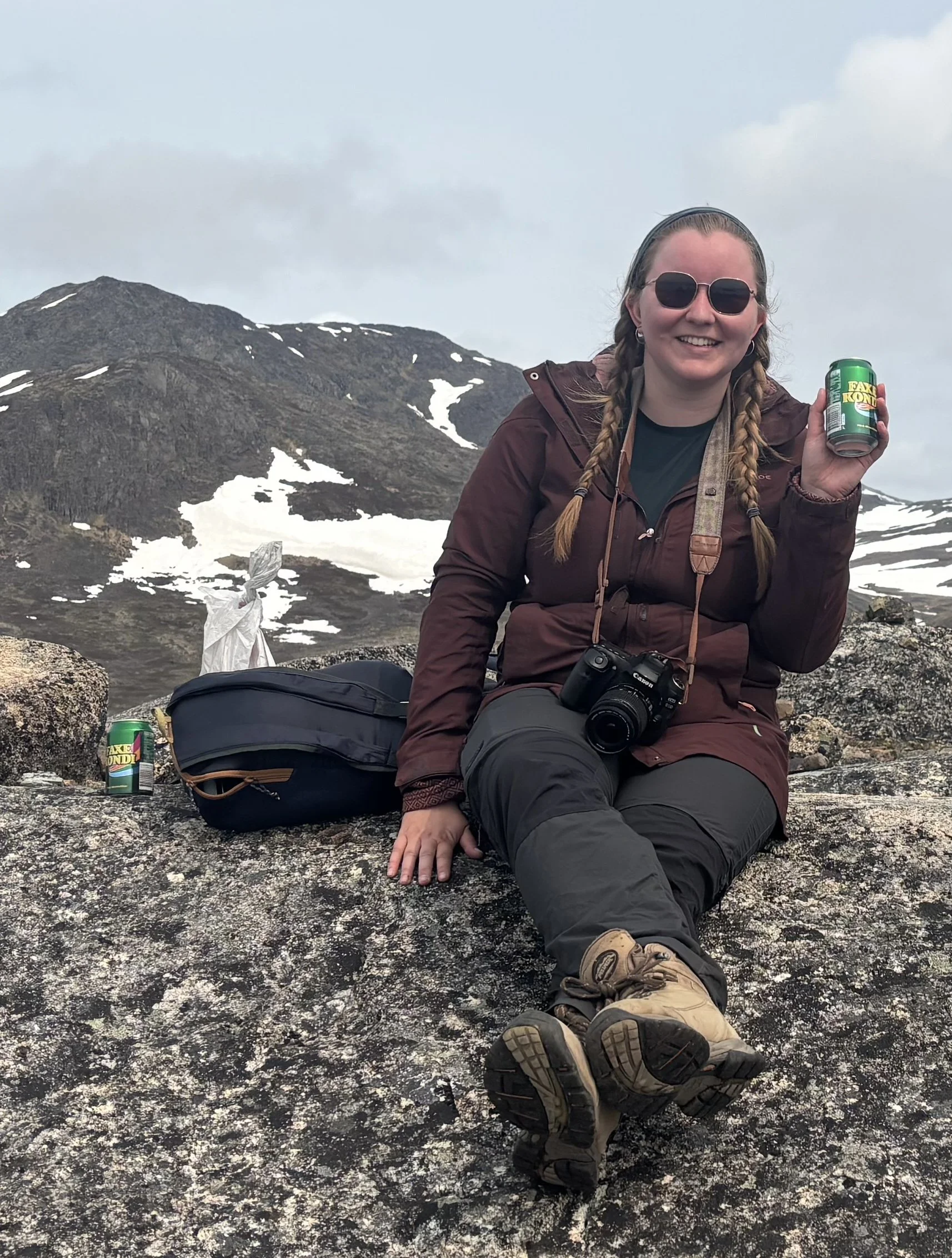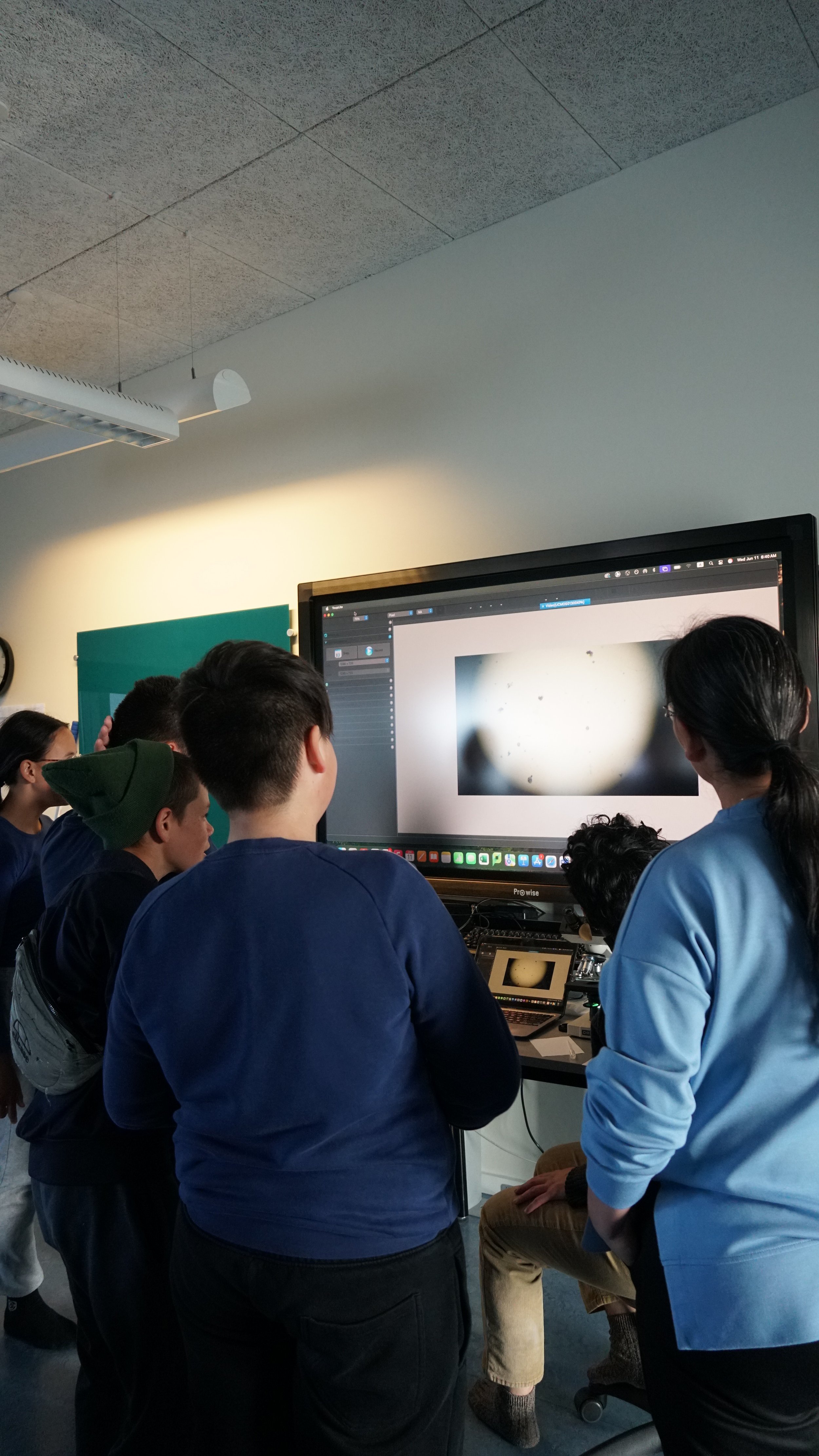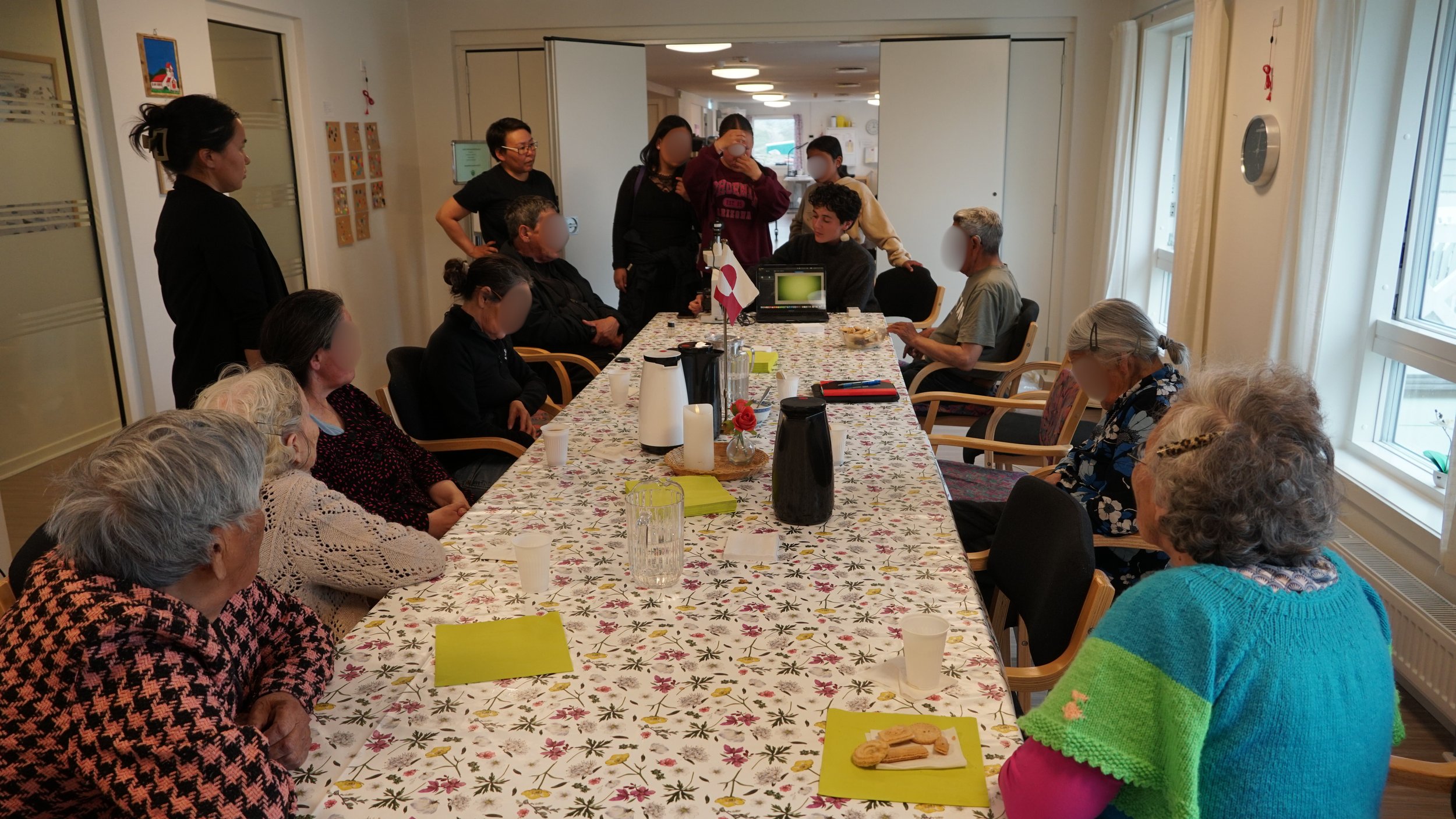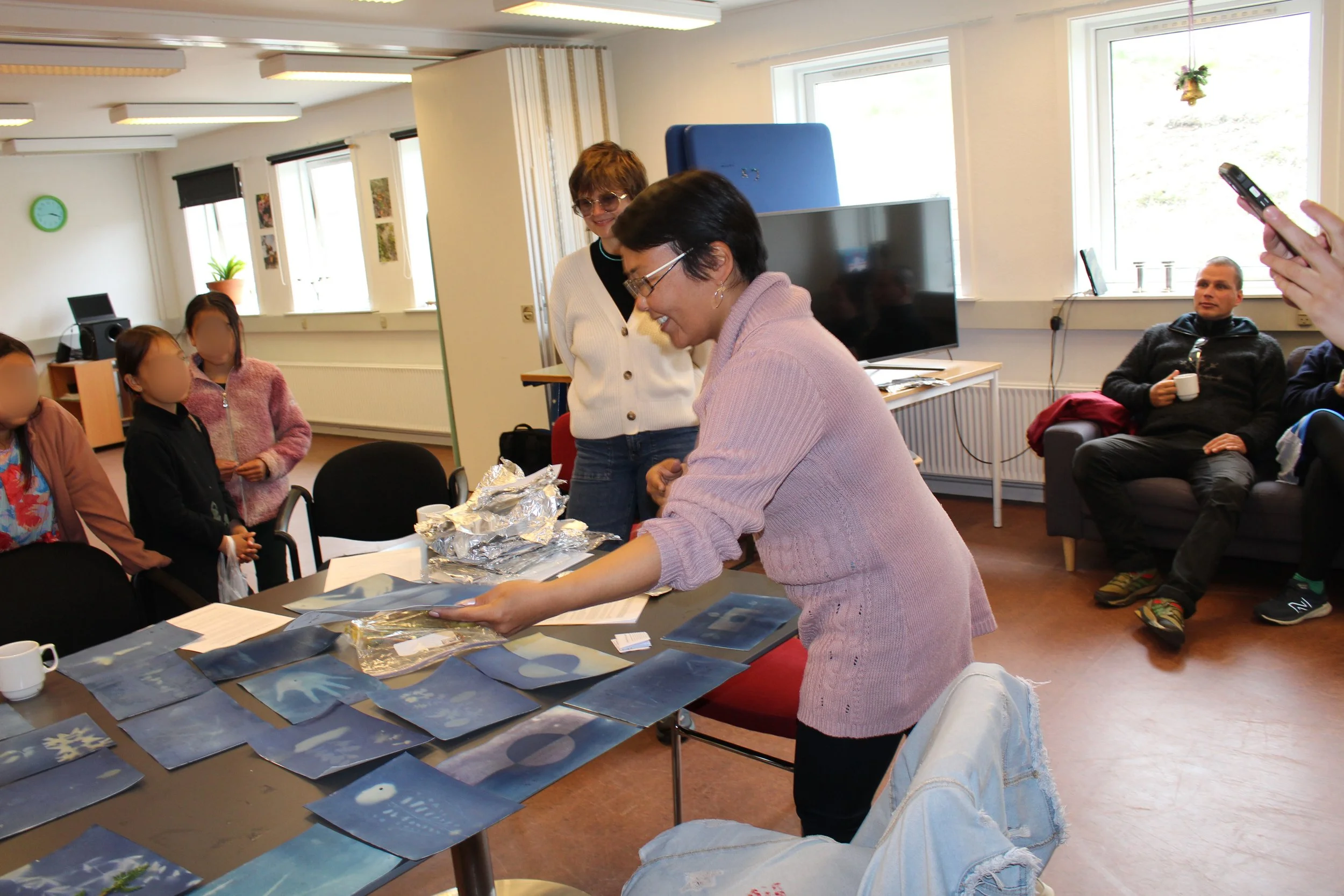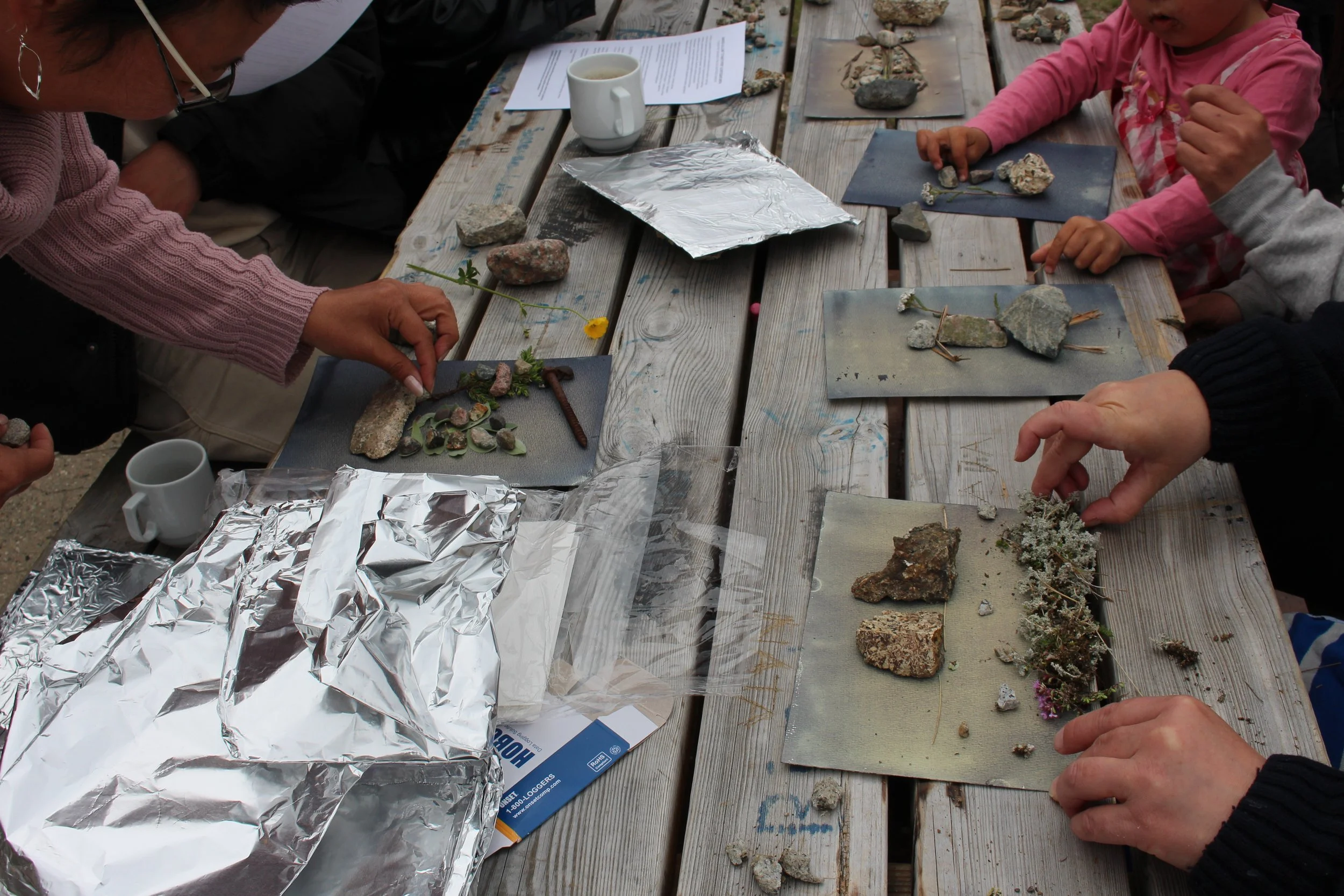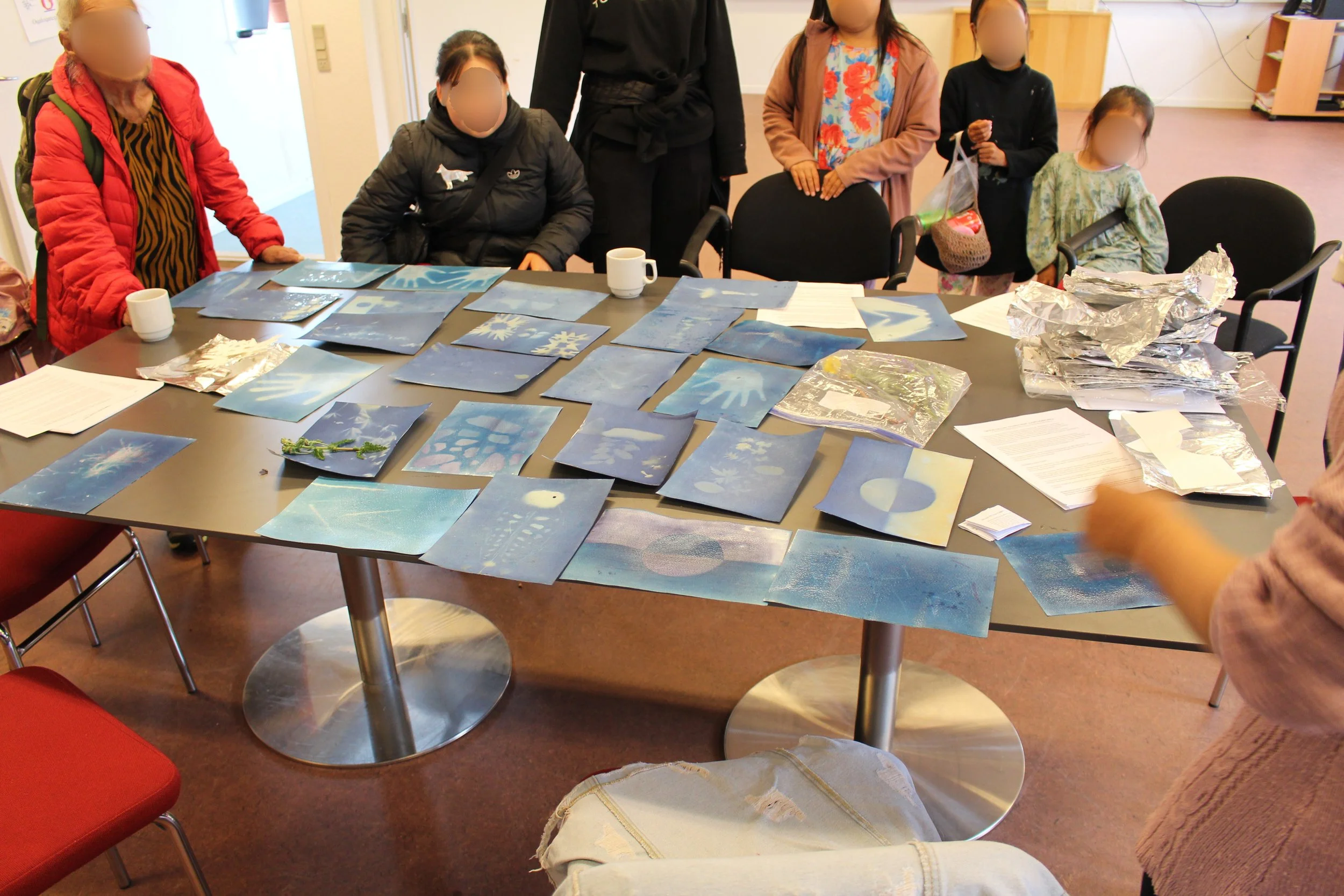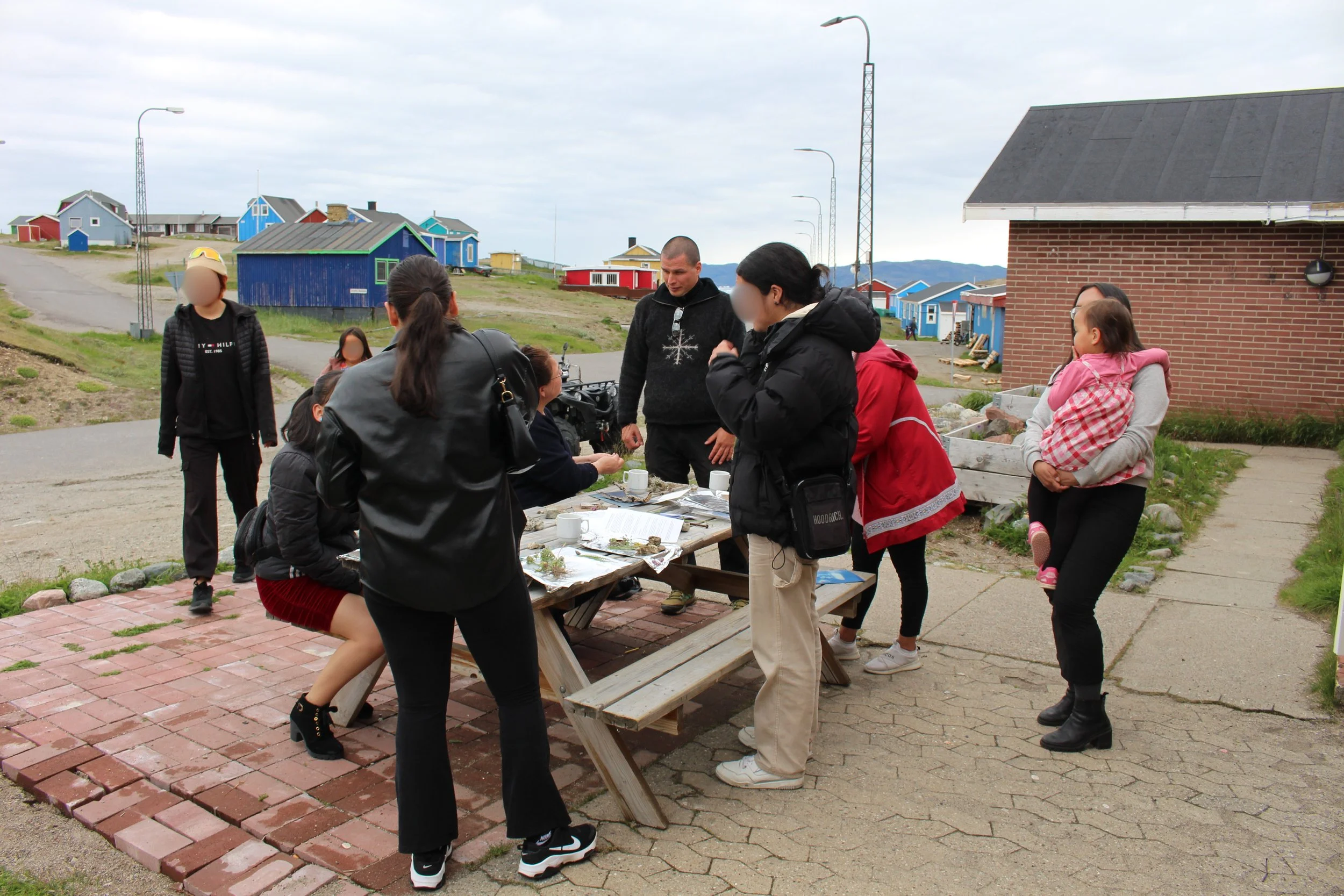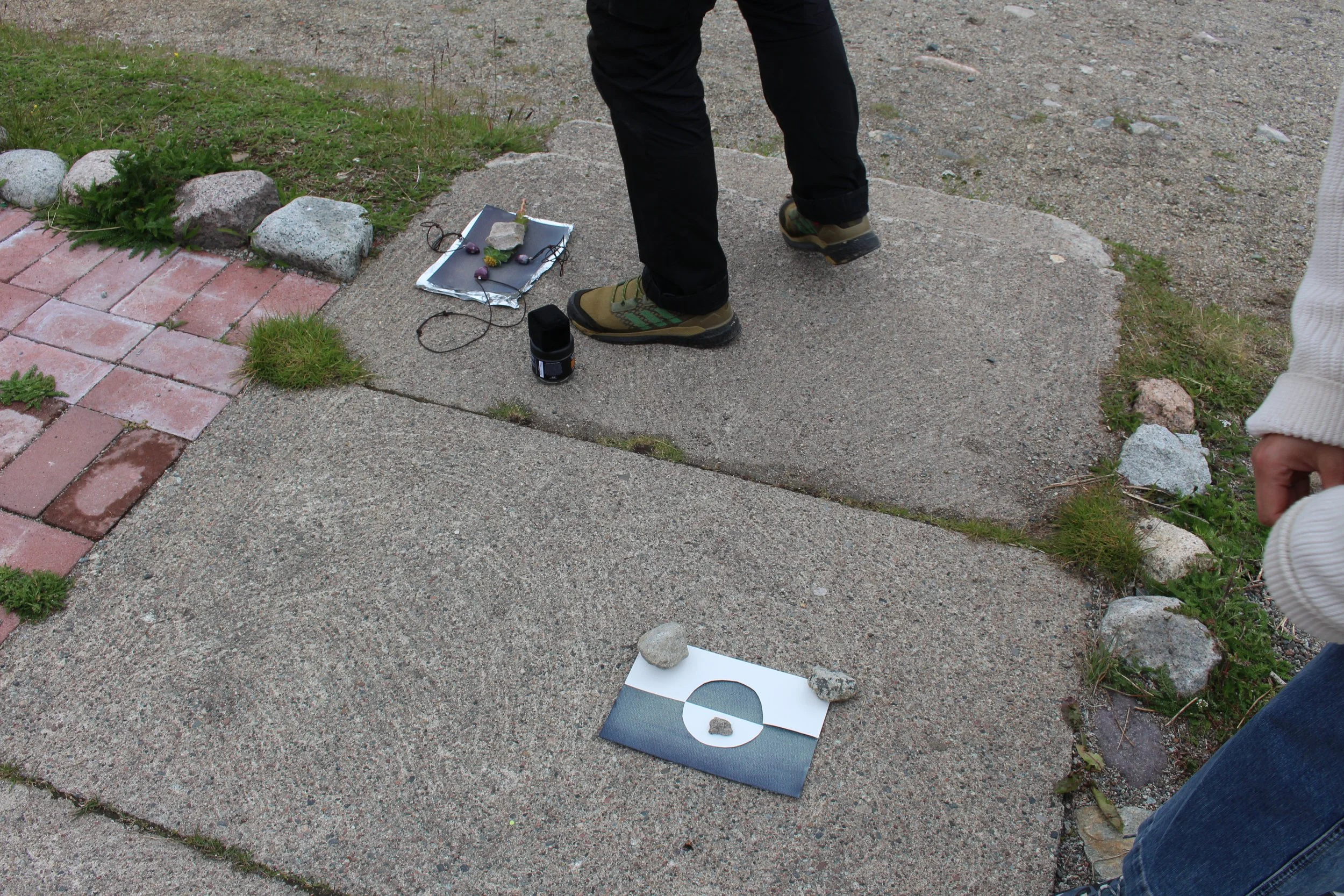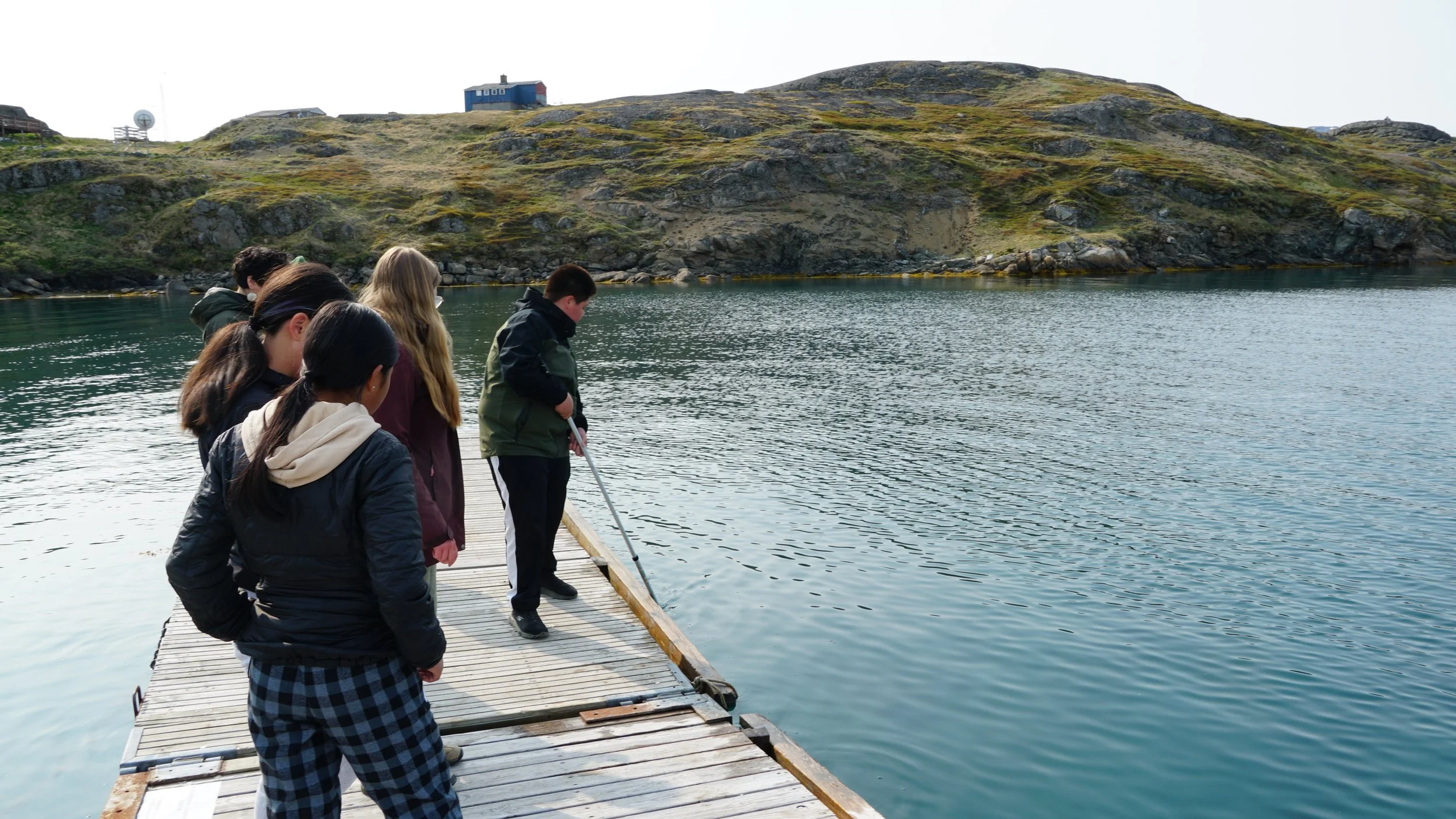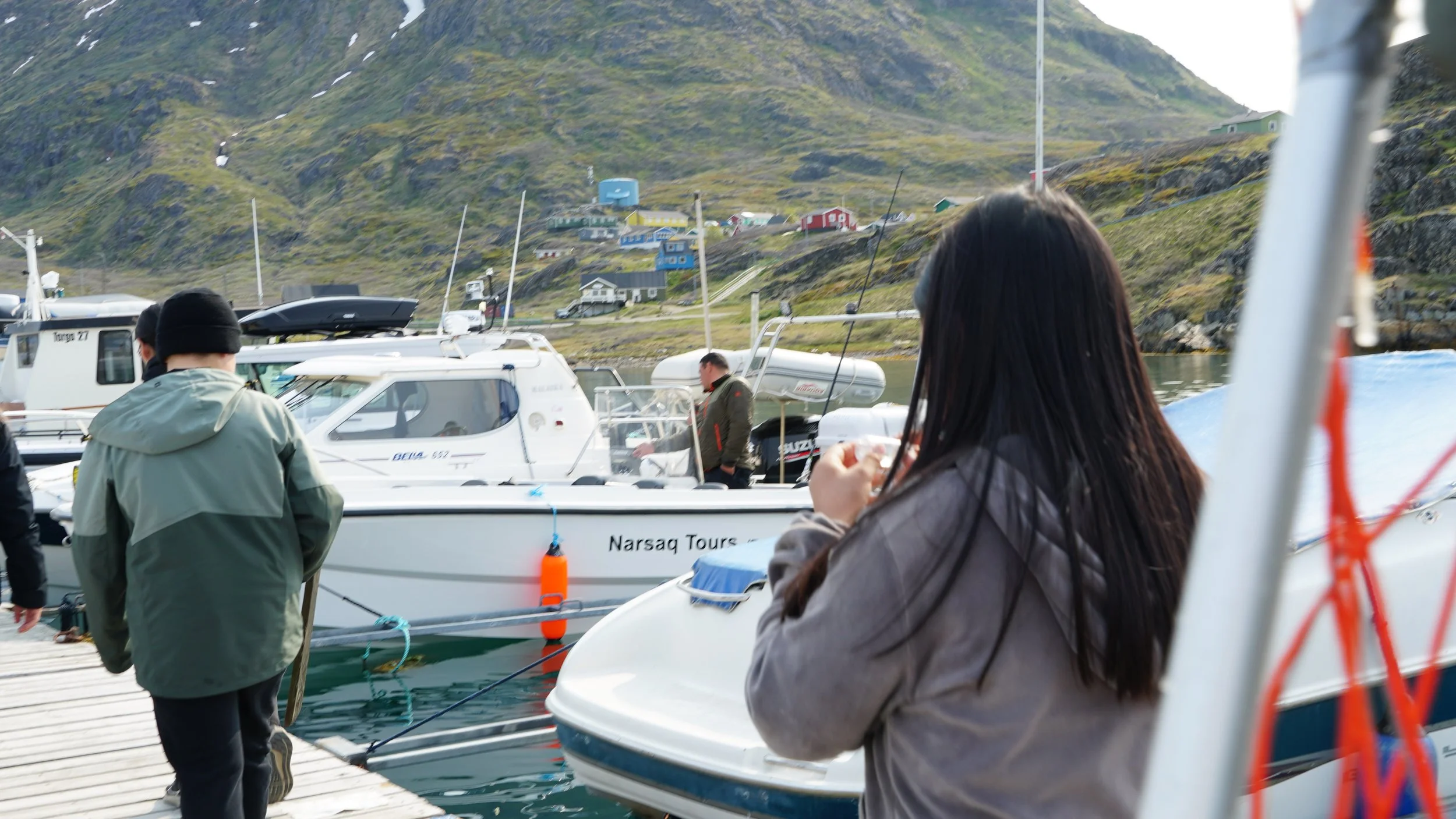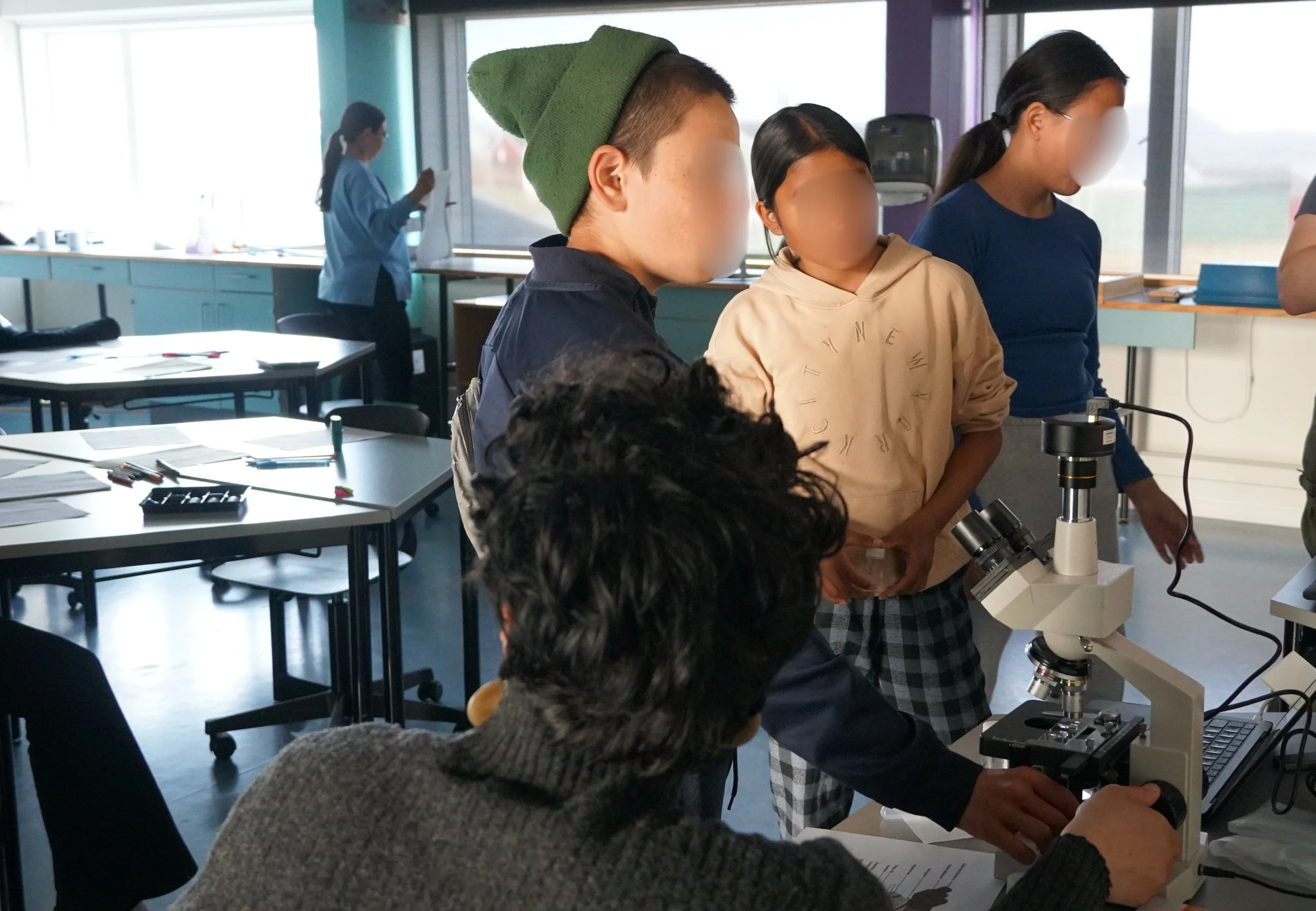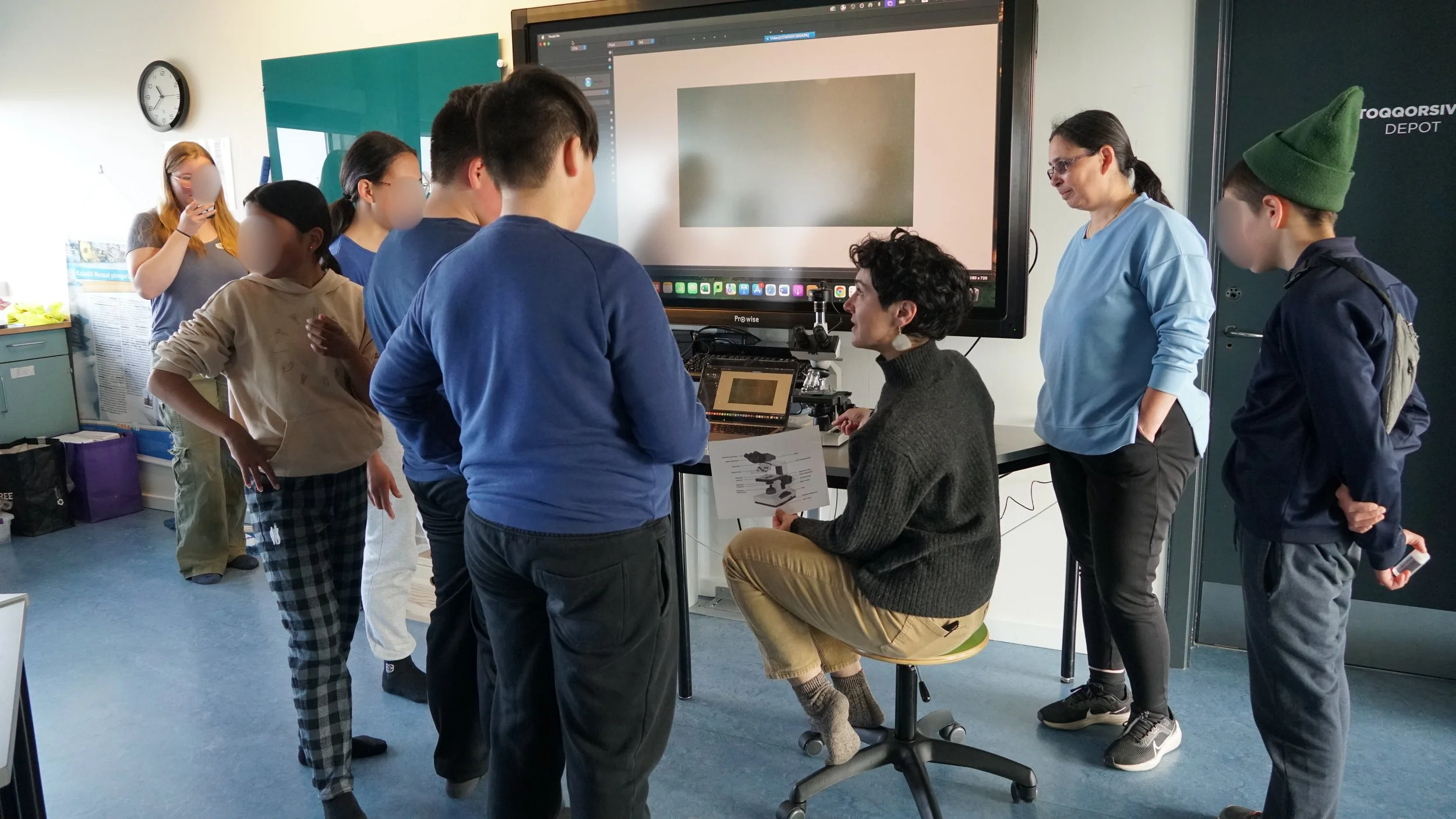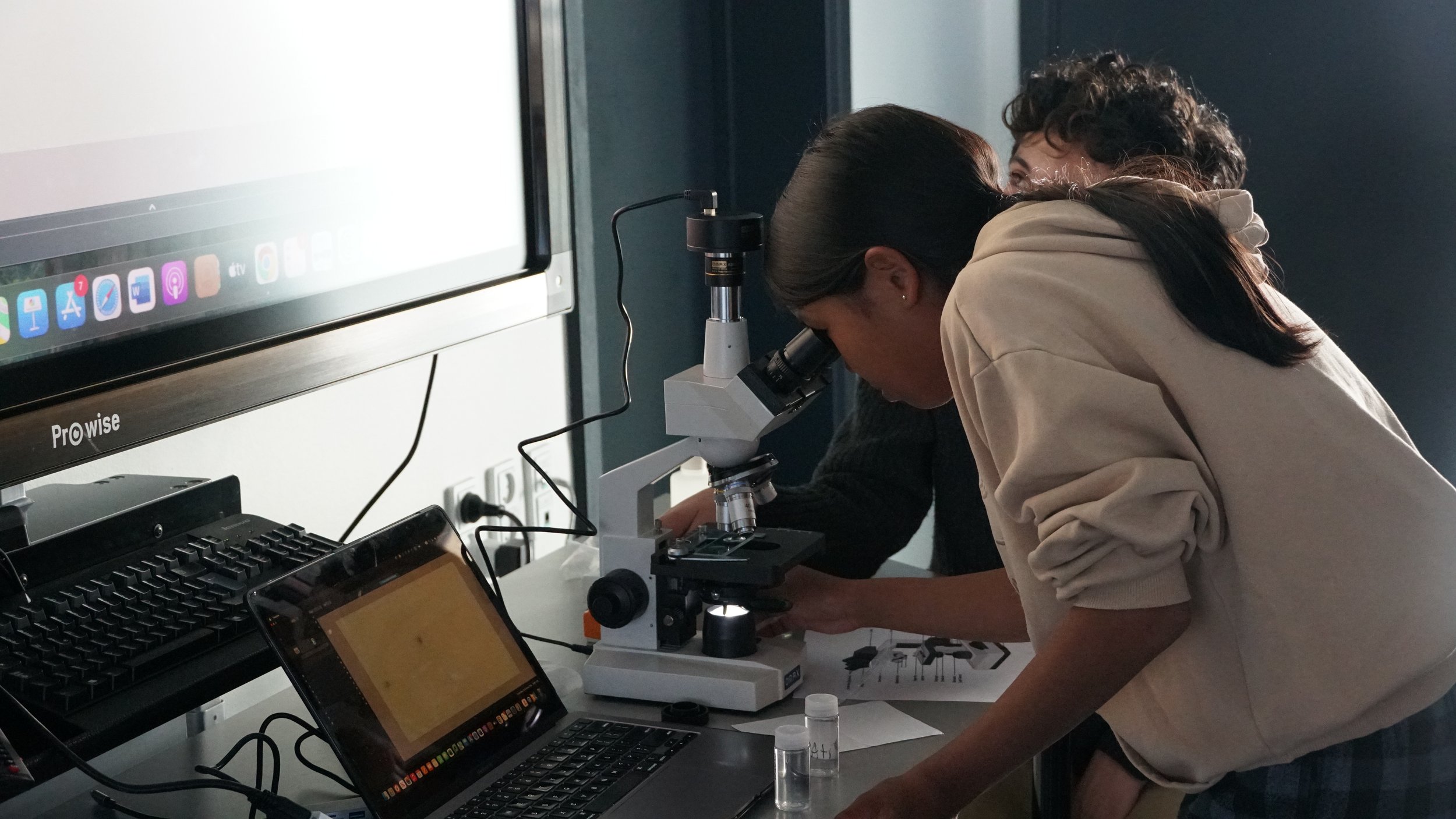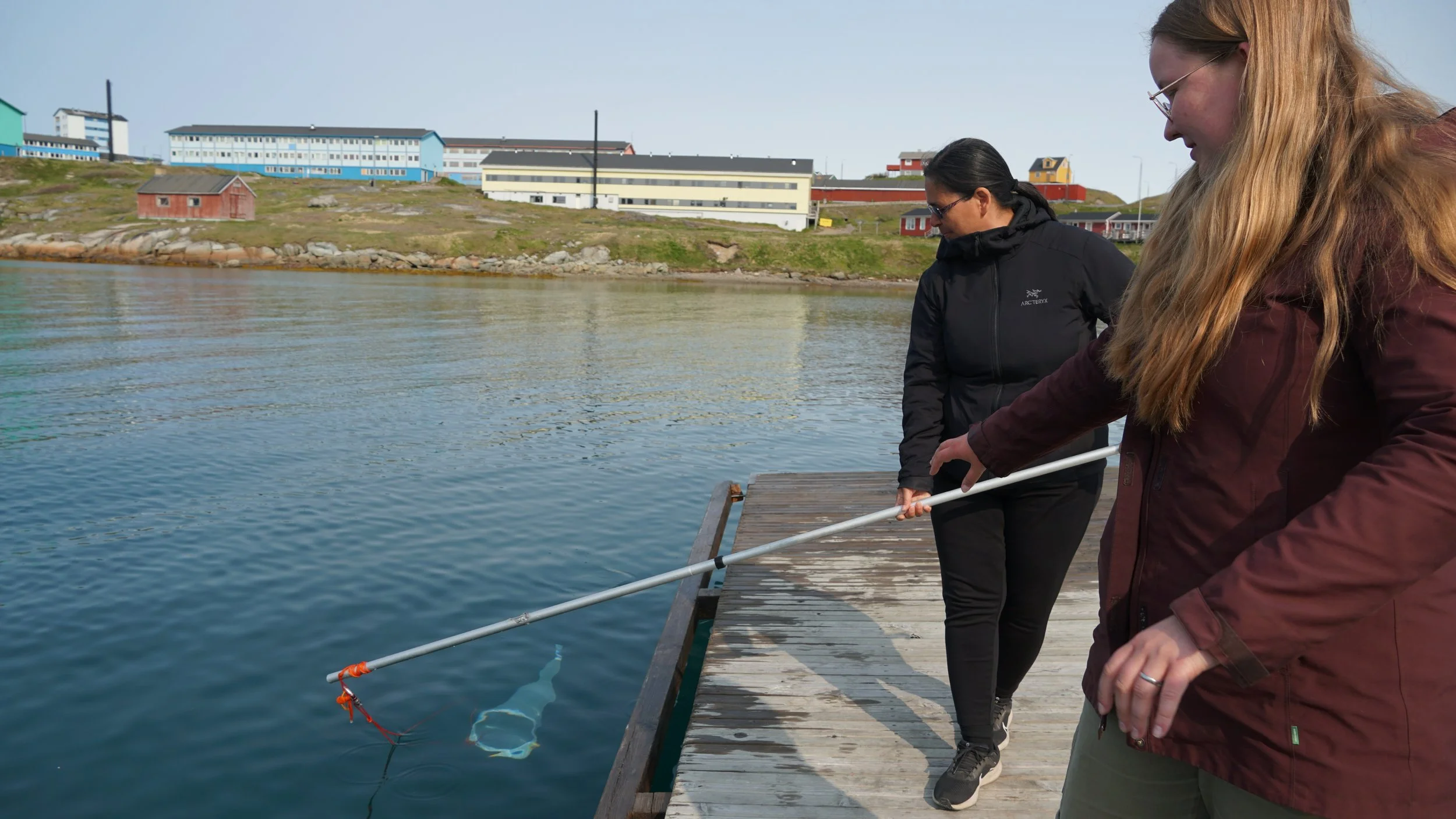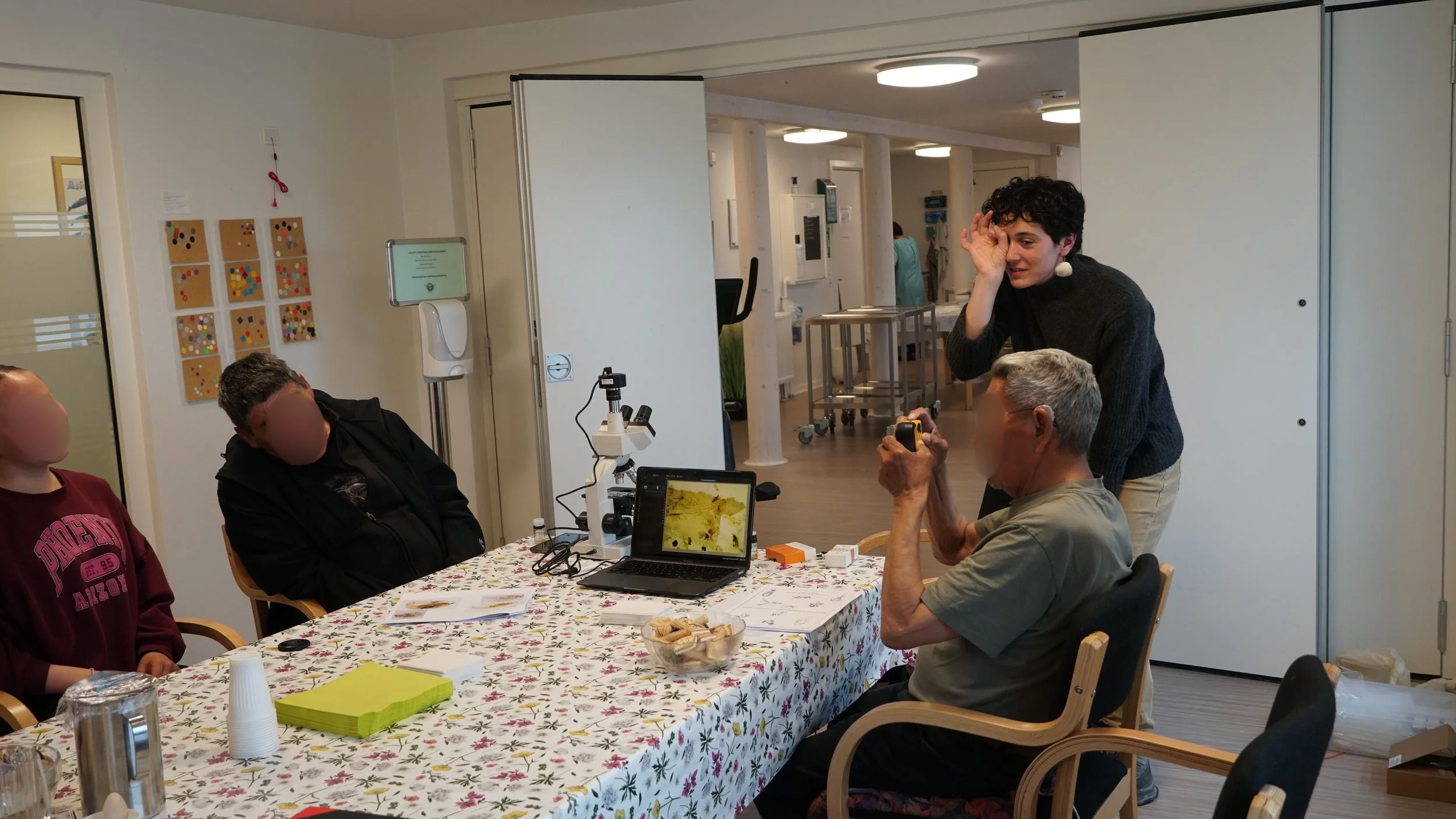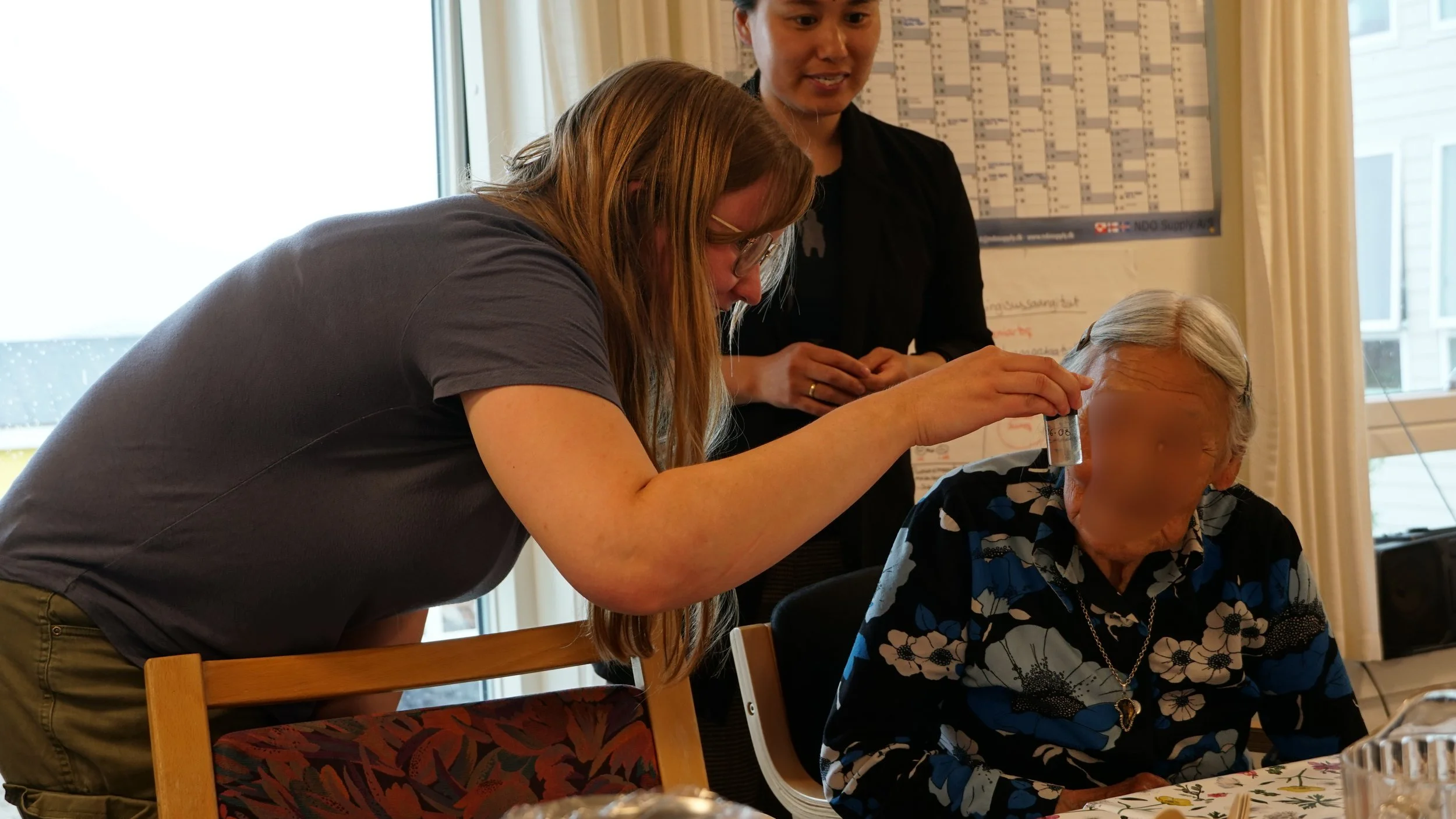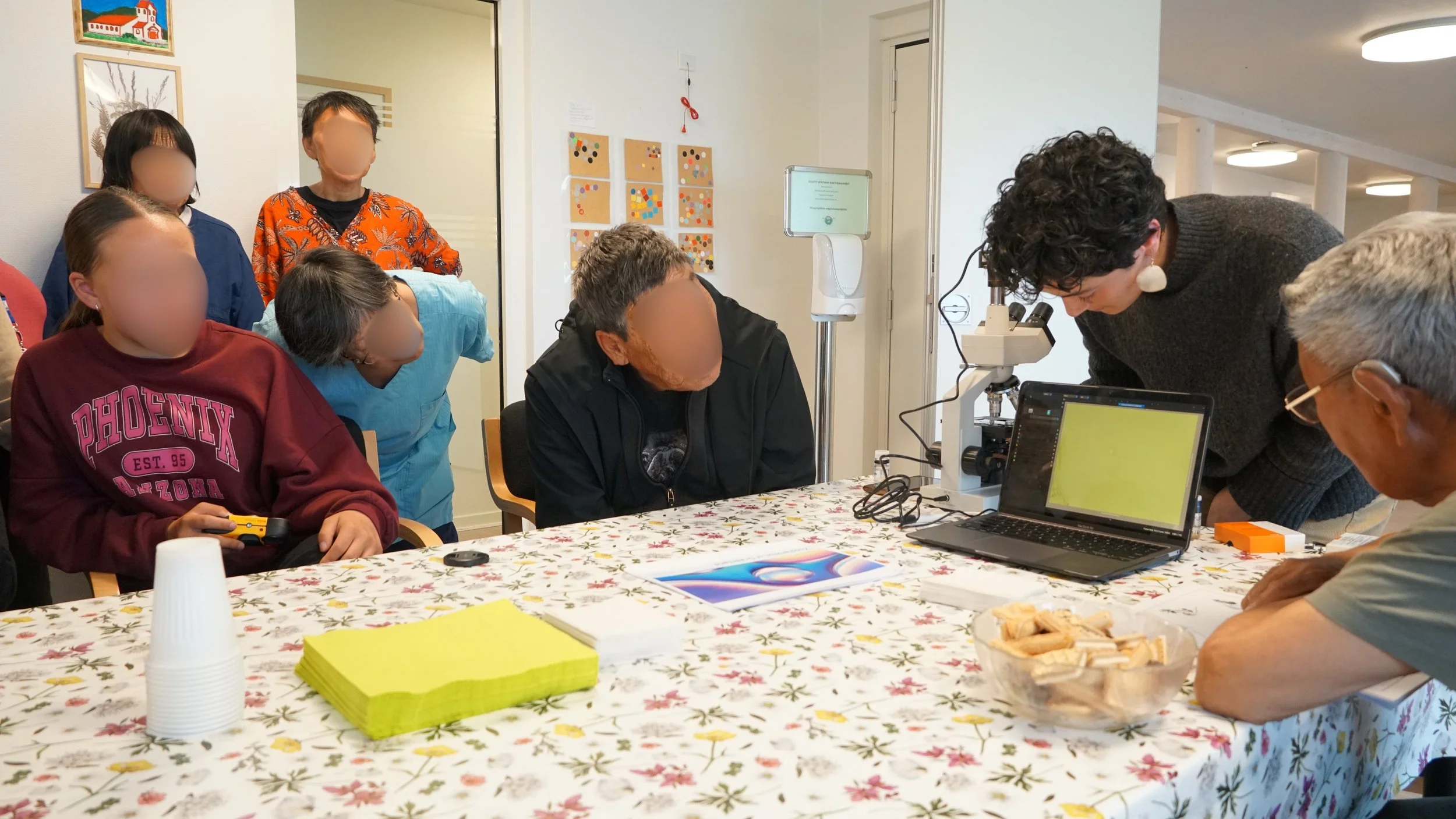Art, Science, and Community Evolutions in Greenland
This page is dedicated to art & science collaborations with youth and elders in Narsaq, Greenland— a project supported by the National Science Foundation from 2024-2025.
Science requires artistic thinking— creativity is the backbone of asking meaningful research questions, and design is vital to successful communication of data. Earth outstretches in patterns, colors, & sounds, and science observes and interprets these messages.
Art can leverage the tools of science— from microscopes to circuit boards. The organization of the scientific process can augment art practice, and lessons from science communication inspire efforts to make the art world accessible to wider audiences.
Both public-facing, artists and scientists are our storytellers. Together, we cast wider nets and enlarge communities of conscience and consciousness, enriching a unified front against the climate crisis.
Collaborators
Misia Lerska
Digital Producer, Multicultural Communicator, & Artist
Misia Lerska is a multimedia artist, MFA candidate at NYU, and professor of digital art whose work uses visual media to explore justice, identity, and belonging. She cares deeply about making art that builds empathy, shifts perspectives, and imagines a more just world. Her work uses microbial culturing and microscopy to make immersive video installations about what ties us all together from a molecular to a broader societal level.
Annabe Marquardt
Interdisciplinary Researcher, Psychologist & Environmental Scientist
Annabe holds a B.S. in Psychology (Maastricht University) and M.E.S. in Environmental Studies from Dalhousie University, where she performed research in the Inuvialuit Settlement Region (Northwest Territories, Canada). Her professional focus is on the investigation and monitoring of climate change impacts through an interdisciplinary lens, aiming to deepen our scientific understanding & meaningful communication of how environmental changes affect both natural ecosystems and human societies.
Local Collaborators & Organizations
Narsaq International Research Station (NIRS) & Lise Autogena – for supporting our work, facilitating local connections, and rooting our science in community. https://www.narsaqresearchstation.gl/
Ane Marie Poulsen (Narsaq) – for organizing our engagement with Narsap Atuarfia (local school) and two years of synchronous and written translation.
Susanne Lynge (Narsaq) – for facilitating our engagement with Klub Qaqqavaarsuk (Narsaq youth club).
Katrina K. Kielsen (Narsaq) – for facilitating our engagement with Utoqqarmiuni (elders’ center) and synchronous translation.
Erik Kielsen (Qaqortoq) – for valuable written translations.
Hans Karnis Knudsen (Narsaq) – for friendship and vital assistance in accessing scientific field sites & building local connections.
Ivaaq Chemnitz Poulsen (Narsaq) – for friendship, vital assistance in field safety, and generous sharing of local knowledge.
Bailey C. Nash and Shayna Garla (Northwestern University & Syracuse University) – for valuable participation in fieldwork and community engagement in Narsaq.
Funding Acknowledgements
National Science Foundation – Doctoral Dissertation Research Improvement Grant (Award # 2330271); PI’s Yarrow Axford & Mia Tuccillo.
Northwestern University – for additional funding that made this work possible.
Community Cyanotype Storytelling Workshop 2024
Narsaq, Greenland
A cyanotype photography workshop to explore the stories of Narsaq with natural materials and local waters to enrich paleolimnological storytelling of water ecosystem history.
Youth Photography, Phytoplankton & Microscopy Workshop 2025
Narsaq, Greenland
A scientific collection, observation and reflection workshop with a middle school class at Narsap Atuarfia.
Knowledge transfer: Microscopy & Photography from Youth to Elders 2025
Narsaq, Greenland
A knowledge transfer event: our team and middle schoolers from Narsap Atuarfia teach elders how to use a microscope and disposable cameras, and elders share knowledge about freshwater ecosystems & stories about Narsaq.
Community Cyanotype Storytelling Workshop– Narsaq, Greenland 2024
Paleolimnology is a form of storytelling— what was the climate like thousands of years ago? What did the landscape look like? What lived in the lakewater? How has the ecosystem changed over time? Art can similarly be used to tell stories about the history of places or people.
Cyanotype photography refers to the exposure of paper treated with chemical solutions to UV light, and is thus a camera-less form of image capturing. In summer, the Arctic is drenched in sunlight during almost all hours of the day, providing the ideal conditions for developing cyanotype prints.
We held a cyanotype print workshop in Innuttaasut Illuat (Narsaq community gathering space) led by artist Misia Lerska. Participants gathered natural materials to make prints. At the end, we reflected on the stories our prints tell, and discussed the foundation of our scientific work that aims to tell the story of one lake near Narsaq.
The event was attended by locals of all ages, especially by youth from Klub Qaqqavaarsuk (local youth club), who we tasked with naming our study lake: Nars Imeq (60.9276ºN, -46.2145ºW).
Youth Photography, Phytoplankton & Microscopy Workshop– Narsaq, Greenland 2025
Like many places in Greenland and around the world, fishing plays an important role in the community of Narsaq. But what sustains fish populations over time, and how might the climate impact them? Our paleolimnological work includes microscopic identification of sedimentary subfossils of zooplankton, important members of aquatic food chains as predators of phytoplankton and prey of fish.
We held a science workshop at Narsap Atuarfia (school) to teach a middle school class how to collect zooplankton from the local harbor using a plankton tow. Then, students learned how to use a microscope and looked at their samples, searching for plankton. We reflected on how microscopes can capture a zoomed-in perspective of Narsaq. To zoom-out, students were given disposable cameras and one day to capture another perspective of their hometown. Developed photos and microscope images will be compiled into a photo album for the students and their school.
The event was run by Annabe Marquardt (plankton tow sampling lead), Mia Tuccillo (microscope lead), and Misia Lerska (art lead). Translation was conducted by Ane Marie Poulsen and Susanne Lynge.
Knowledge transfer: Microscopy & Photography from Youth to Elders – Narsaq, Greenland 2025
There are so many ways to observe the natural world, and the tools or technology at our disposal have changed over time. Knowledge transfer should not just be between visiting scientists and community members, but also within communities across generations.
In this workshop we held at Utoqqarmiuni (the Narsaq elders’ center), we invited middle schoolers to participate in showing their elders how to use a microscope to study water samples. We observed abundant copepods in our study lake, Nars Imeq. The youth also showed their elders how to use disposable cameras, taking many photos during the event that will similarly be developed for a photo album for the elders’ center.
The event was run by Mia Tuccillo, Annabe Marquardt, & Misia Lerska, and translation was conducted by Kristina Kielsen and Ane Marie Poulsen.

